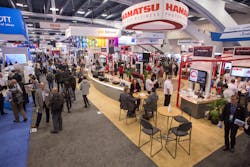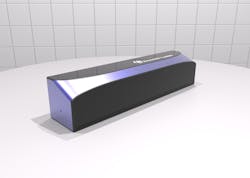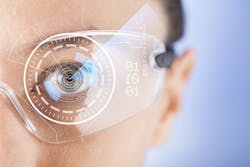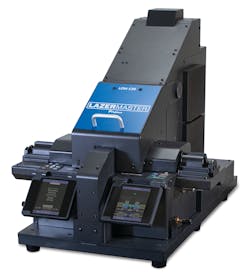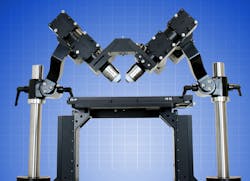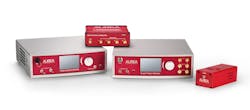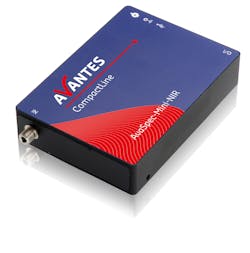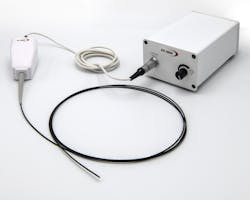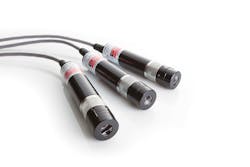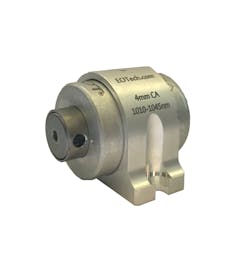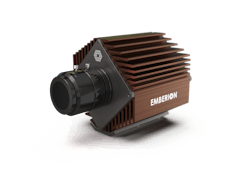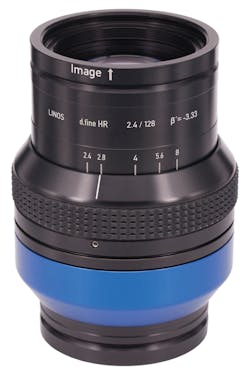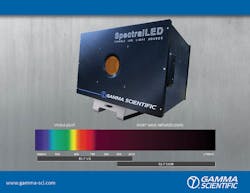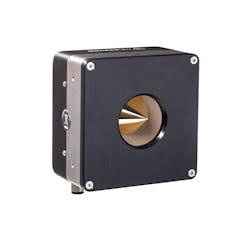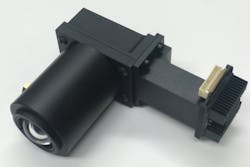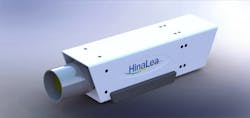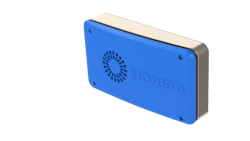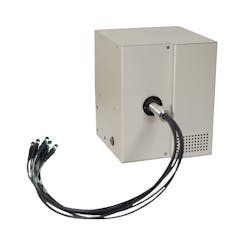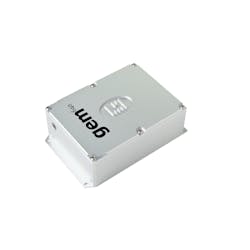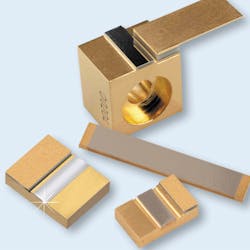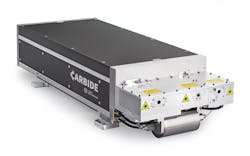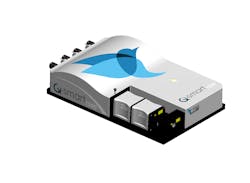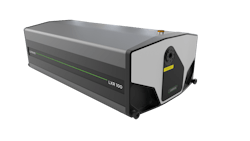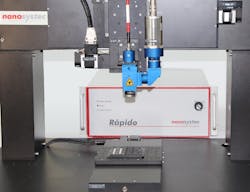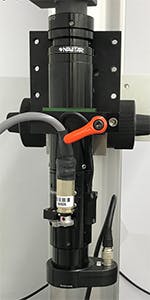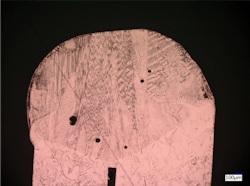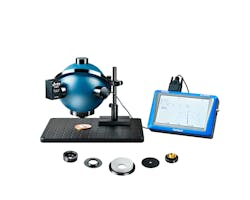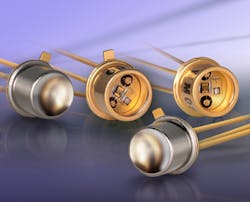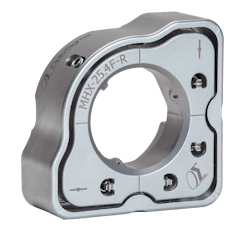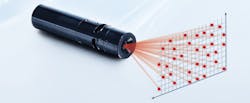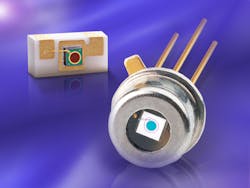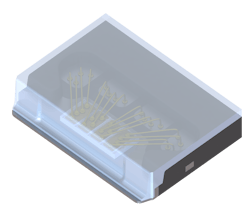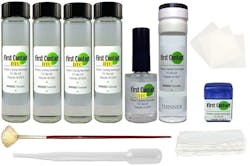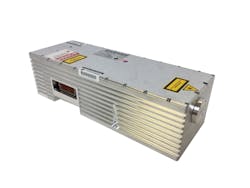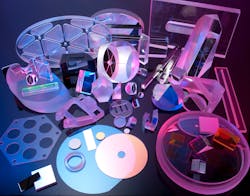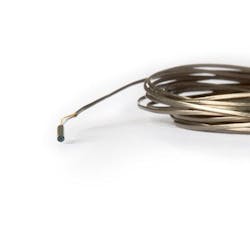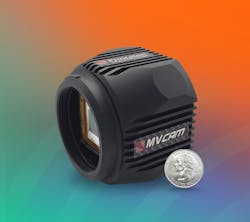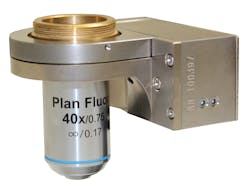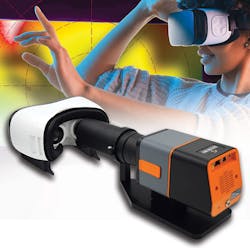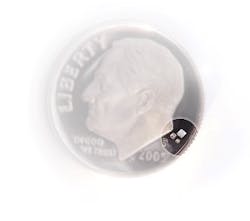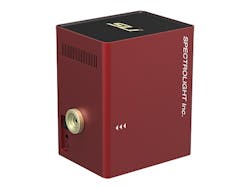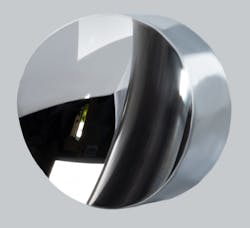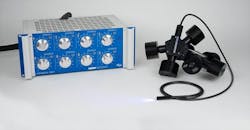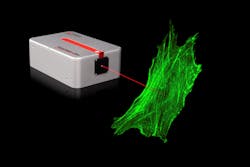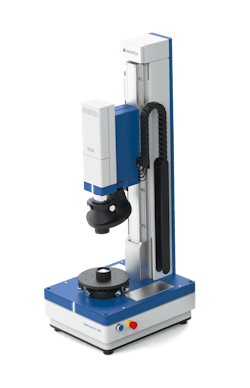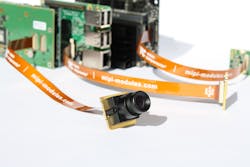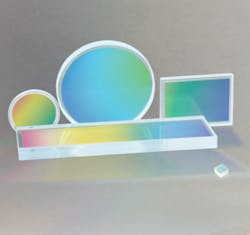Coming up in just a couple of weeks, the SPIE Photonics West 2020 Exhibition will run February 4th through 6th, with around 1350 exhibitors ready to demonstrate their latest components, devices, and systems to more than 23,000 researchers, technology developers, and buyers worldwide.
Here at Laser Focus World, we invited companies to give us an advance look at what they will be showcasing during the exhibition—and the responses we received follow below (alphabetically by company names, with booth numbers). Some companies that responded will also be exhibiting at the SPIE Biomedical Optics Symposium (BiOS) Expo, which will take place February 1st and 2nd (the weekend before Photonics West)—so we note these booth numbers as well.
Midwave-infrared laser
The MWIR-5 provides 5 W of average power with ±2% stability between 5 and 6 µm for high-performance sensing applications and research.
Access Laser, Booth 1460 (Photonics West) | Get more informationAR/VR optical coatings
A line of augmented-reality/virtual-reality (AR/VR) coated optics features a wide range of standard or custom beamsplitter coating options applied to glass, crystal, or plastic substrates. Standard AR/VR beamsplitter coatings are available for beamsplitters measuring 5 to 450 mm in diameter, with an available 0–60 degree angle of incidence range, and custom AR/VR beamsplitter coatings use the company's in-house measurement equipment capabilities to meet specific requirements. The coatings are regularly tested to meet military specifications, ISO Standards, and high laser damage threshold tests.
AccuCoat, Booth 254 (Photonics West) | Get more informationFusion splicer
The LZM-120A+ LAZERMaster fusion splicer uses a CO2 laser heat source to perform splicing, tapering, lensing, ablation (for cleaving and mode stripping), or other glass-shaping operations with diameters up to 2.3 mm. The high-resolution optical analysis system works in conjunction with intuitive onboard firmware to automate the glass-shaping processes and may also be performed manually or by PC control. The FPS PC control GUI is supplied with the LZM-120A+ to provide greater flexibility and finer control, allowing creation of PC control algorithms using a complete set of PC control commands.
AFL, Booths 8019 (BiOS) and 3019 (Photonics West) | Get more informationSmudge-resistant glass coating
The SURECO 2320 transparent fluoropolymer coatings protect optical lenses and sensors from oil, dust, water and fingerprints without sacrificing clarity. The coatings minimize smudges and enable simple cleaning without altering the appearance of the object’s surface. A thin layer can be applied on a glass or optical surface using a wet process such as spray, dip, or spin coating or a dry process such as vapor deposition. A monomolecular layer (<10 nm) of the coating provides complete, effective surface protection.
AGC Chemicals, Booth 4868 (Photonics West) | Get more informationDual selective-plane illumination microscopes
The ct-SPIM and ct-dSPIM dual selective-plane illumination microscopes are optimized for imaging cleared tissue (“ct”). They use a SPIM objective geometry identical to iSPIM/diSPIM, respectively, but without an inverted microscope. The ct-SPIM and ct-dSPIM configurations include ASI and Special Optics’ dipping objective lenses designed for light-sheet microscopy of cleared tissue samples. The objectives work in any refractive-index media without a correction collar because of a unique curved first surface. Both lenses are robust to immersion in harsh media.
Applied Scientific Instrumentation (ASI), Booth 8360 (BiOS) | Get more informationOptical building blocks instruments
A comprehensive suite of optical building-block instruments is dedicated to the development of novel quantum optical systems, such as in quantum communications, quantum-safe security, and quantum sensing. These include the TPS “all-in-one” entangled photon-pairs source, the LYNXEA time-resolved single-photon counting instrument, the SPD_OEM single-photon counting module, and the CHRONOXEA time-correlation module.
AUREA Technology, Booth 857/957 (Photonics West) | Get more informationMini near-infrared spectrometer
The CompactLine AvaSpec-Mini-NIR spectrometer combines the features of the company's AvaSpec-NIR256-1.7 and Mini-series spectrometers. The device is the size of a deck of cards and USB-powered for simple integration into other devices, including OEM handheld applications such as food analysis and the recycling industry.
Avantes, Booth 1826 (Photonics West) | Get more informationVideo borescope inspection system
The SV-1000 chip-on-tip video borescope camera has utility in a variety of inspection applications. The 1.6-mm-diameter camera system includes the ultra-small CMOS sensor with 400 × 400 pixel resolution, 120-degree field of view lens, and integrated LED light for illumination within a 1.9 m flexible shaft. The sensor assembly includes a mountable handle and connects to a separate camera/LED controller. The revolutionary system features dual, simultaneous-image outputs, HDMI and USB 3.0, to enable viewing from a connected display as well as through a PC for image capture and documentation.
Canon Medical, Booth 8476 (BiOS) | Get more informationLaser diode modules
The StingRay line of 19-mm-diameter laser diode modules features 405–830 µm wavelengths, power up to 200 mW, power supply ranges from 5 to 24 VDC, pointing stability <10 µrad/°C, an onboard diagnostics monitor, and RS-232 control. Fiber-ready options are also available.
Coherent, Booth 4845 (Photonics West) | Get more information4 mm Faraday rotators and isolators
The PAVOS+ 4 mm Faraday rotators and isolators prevent feedback and back-reflections in solid-state lasers. Building on the company's PAVOS devices, PAVOS+ specifications include minimum isolation increasing from 30 to 33 dB with typical isolation exceeding 37 dB, improved thermal lens focal shift due to shorter rotator material, and 2° tipped parallelogram PBS cubes for improved back-reflection protection and perpendicular rejected beams. Devices also feature a reduced footprint and accessories including an optional clamp, polarizer covers, and waveplates.
Electro-Optics Technology (EOT), Booths 8231 (BiOS) and 1561 (Photonics West) | Get more informationVIS-SWIR camera core
A VIS-SWIR camera core incorporates the company's novel nanotechnology-based VGA array, and offers a wide spectral range from 400 to 2000 nm using one focal-plane array. The camera core is relevant for various applications within machine and night vision, as well as hyperspectral imaging.
Emberion, Booth 5279 (Photonics West) | Get more informationHigh-resolution inspection lens
The d.fine HR 2.4/128 3.3x high-resolution inspection lens is optimized for a magnification factor of 3.33x and supports sensors up to 82 mm in length. The imaging quality is maintained across the entire image area showing a very high light intensity due to an aperture of 2.4. The lens matches well to modern, high-resolution 12k and 16k line cameras supporting 3.5 and 5 µm sensors. Optimized for applications with extremely high resolution requirements, the lens can be equipped with a prism module for coaxial illumination as well as a mechanical tube to adapt the lens to M72, M90, and M95 camera mounts.
Excelitas Technologies, Booths 8179 (BiOS) and 1149 (Photonics West) | Get more informationHigh-power, low-smile diode laser
The Focuslight FL-VS300 Series high-power, low-smile-effect laser bars are based on Micro Channel Cooling (MCC) technology. They have utility in demanding applications such as forming a wider line for glass surface treatment or a rectangular beam for cladding. Designed for volume production, they feature a laser bar bonded on MCC with gold-tin solder, which results in a low smile. A 1 cm bar with less than a 1 µm smile can deliver more than 200 W continuous-wave (CW) output with power conversion efficiency of 65% and a lifetime of more than 20,000 hours. 808, 940, and 980 nm versions are available.
Focuslight Technologies, Booth 1855 (Photonics West) | Get more informationSWIR tunable light source
The SpectralLED tunable RS-7 shortwave-infrared (SWIR) tunable light source incorporates nine SWIR wavelengths for synthesis of commercially available light sources or based on spectra that is imported. The platform adapts to automated test systems and production line integration, with integrated optical feedback and temperature control to ensure solid stability and consistent results. Applications include camera and image sensor calibration, photodiode detector responsivity characterization, diagnostic medical imaging, and technical and industrial imaging.
Gamma Scientific, Booth 2651 (Photonics West) | Get more informationHigh-power detector
The HP60A-15KW-GD high-power detector for laser power measurement up to 15000 W features a gold reflector cone to handle the high intensities of very small beams. By reflecting the incident light on the sides of the aperture, the cone effectively spreads the intensity on a larger area, raising the damage threshold to 10 kW/cm2 at the full power (15 kW). The very low back-reflections of the detector also ensure a safer working environment with high-power lasers. The detector also features a USB output for direct measurements on a PC.
Gentec-EO, Booth 1649 (Photonics West) | Get more informationProjection engine
Contained in a machined aluminum housing for durability, the Model DPE4505 projection engine features on axis (zero offset) projection, >80% brightness uniformity, ~700 lumens with green LED, and a TIR prism for compactness and performance. The projection engine is modular and customizable with varied LEDs and lenses, and offers high contrast and low distortion.
Greenlight Optics, Booth 4247 (Photonics West) | Get more informationHyperspectral imaging system
The Model 4200 hyperspectral imaging system has utilities in noncontact stand-off OEM and research applications. With a standard 19° field of view and a working distance from 250 mm to 1 m, it adapts easily to industrial line inspection, laboratory, and agricultural field measurements. The company also offers development of advanced classification tools in order to render immediately actionable information from the images.
HinaLea Imaging, Booth 8168 (BiOS) | Get more informationDiffractive beam shaper
The DeepCleave diffractive beam shaper offers an optical solution for laser glass cutting of thick glasses, with no need for external high numerical aperture (NA) objectives or other high-cost optics. The module enables tight focusing (<2 µm spot) over a large depth of focus (>1 mm in air). The focused spot is equivalent to a 0.35 objective NA.
Holo/Or, Booths 8119 (BiOS) and 3119 (Photonics West) | Get more informationTCSPC imaging camera (BiOS) and fiber-coupled spectrometer (Photonics West)
The FLIMera wide-field video rate TCSPC imaging camera is a CMOS-manufactured array of single-photon avalanche diode (SPAD) detectors, with each detection “pixel” having its own time-to-digital converter (TDC). Each pixel is capable of measuring precise fluorescence decays in time-domain, and the entire camera provides a complete fluorescence lifetime image map (FLIM) with each frame of the camera for live-cell FLIM dynamic studies.The PoliSpectra M116 MultiTrack fiber-coupled spectrometer features a 2D scientific back-illuminated CMOS sensor running at 94 to188 fps, configurable with 8-, 16-, or 32-fiber input channels for simultaneous acquisition of UV-NIR spectra. It features a concentric optical design with UV extended spectral range and a customized fiber bundle to provide very high spectral resolution (1 nm) and high sensitivity. The high quantum efficiency sCMOS sensor (95% in the visible) and an integrated order sorting filter allow wavelength coverage beyond 1 µm.
Horiba Scientific, Booths 8156 (BiOS) and 1726/1727 (Photonics West) | Get more informationabout theFLIMera TCSPC imaging cameraandPoliSpectra M116 MultiTrack fiber-coupled spectrometerHigh-power laser
The gem high-power laser series offers key wavelengths for superresolution microscopy, including 473, 532, 561, and 640 nm, among others. With all wavelengths available at 500 mW or more, the lasers can excite a variety of fluorophores and deliver maximum power to the sample, supporting wide-field illumination and sharper images. The gem 640, launching at Photonics West, offers up to 500 mW red light. All lasers in the series have an M2 close to unity and can support direct fiber-coupling solutions.
Laser Quantum, a Novanta Company, Booths 8440 (BiOS) and 1133 (Photonics West) | Get more informationLaser diode heatsinks
A line of laser diode heatsinks features precision-machined, high-performance mounts made from copper and/or tungsten/copper (WCu). Features include smooth, flat, and parallel mounting surfaces with super-sharp edges (<5 µm radius) and optional selective coating of gold/tin (AuSn) solder (typically 3-5 µm), allowing the laser die to be mounted P-side-down at the very edge of the mount.
LEW Techniques, Booth 5053 (Photonics West) | Get more informationTunable femtosecond laser
The CARBIDE tunable femtosecond laser offers pulse duration of 250 fs to 20 ps, repetition rate from single pulse to 2 MHz, pulse energy up to 0.8 mJ, and average power up to 80 W. The lasers mainly have use in drilling and cutting of various metals, ceramics, sapphire, and glass, as well as in material ablation for mass spectrometry.
Light Conversion, booth 748 (Photonics West) | Get more informationFlashlamp-pumped nanosecond lasers
The Q-smart 1200 and 1500 flashlamp-pumped solid-state (FPSS) nanosecond Nd:YAG lasers feature an oscillator-amplifier design to reach up to 1.5 J at 1064 nm. Features include plug-and-play harmonic generators, automatic phase-matching, good beam quality, and fully disconnectable cables and coolant lines.
Lumibird, Booth 1159 (Photonics West) | Get more informationFemtosecond laser
The LXR 100 femtosecond laser offers pulse widths between 900 ± 100 fs, with a pulse repetition frequency between single shot and 40 MHz and a maximum rated pulse energy of 100 µJ. Burst mode and pulse on demand are available.
Luxinar, Booth 4480 (Photonics West) | Get more informationSelective blue laser soldering source
The Rapido-450 selective laser soldering source emits in the blue spectral range to work well with gold-coated parts, preforms, and solder paste. The efficient absorption of the laser energy enhances the process stability compared to standard sources working in the near-infrared range. Optional Collinear Temperature Measurement (CTM) measures the temperature precisely in the solder spot and allows for closed-loop operation. An integrated camera provides a picture of the solder spot, which simplifies process control via machine vision algorithms.
Nanosystec, Booth 5444 (Photonics West) | Get more informationTunable lens focus module
The Zoom 6000 digital imaging system offers fast and accurate fine focus adjustment in a compact design, and extends working distance range of the 6X lens attachments. It also increases depth of field when coupled with infinity-corrected microscope objectives and maintains image resolution with the integrated Optotune EL 16-40 tunable lens. Its USB electrical lens driver has software to control the tunable lens.
Navitar, Booth 238 (Photonics West) | Get more informationHigh-brightness blue laser
The AI-1500 high-brightness blue laser (450 nm) delivers 1500 W output power with a beam-parameter product of 11 mm-mrad. This brightness opens an entirely new range of processing capabilities for copper, gold, aluminum, and other reflective metals, including the possibility to integrate a blue laser into scanning systems.
Nuburu, Booth 3031 (Photonics West) | Get more informationSpectral measurement software platform
The Ocean Intelligence spectral solutions software platform is built around machine learning to provide a next-generation solution for spectral measurements, leveraging the power of machine learning and artificial intelligence (AI) to help address increasingly complex systems and data feeds. Using proprietary algorithms, the software “teaches” industrial sorting systems to quantify aesthetics such as coating uniformity, color, and residues, as well as internal qualities such as contamination, chemical identification, and constituent concentration.
Ocean Insight, Booth 1127 (Photonics West) | Get more information
Integrating spheres
The Ophir IS6D integrating spheres measure the optical power of widely divergent laser diode sources, such as VCSELs. The spheres accurately measure light that diverges up to ±85 degrees, and each sphere is calibrated and includes a photodiode detector. The IS6D-VIS/UV/IR measures powers from 300 nW to 30 W over wavelengths from 200 to 1800 nm, and has a 25 mm input port designed to collect light at angles up to ±60 degrees. The IS6D-IR-170 measures powers from 20 µW to 30 W over wavelengths from 700 to 1800 nm.
Ophir (MKS Instruments), Booth 927 (Photonics West) | Get more informationNarrow-spectral-output ultraviolet LEDs
The UVC series of high-power, long-lifetime ultraviolet LEDs (UVLEDs) features narrow-spectral outputs and are available in four output powers, including 0.58, 0.75, 0.85, and 1.2 mW. The UVLEDs feature wavelengths that are suitable for use in disinfection tasks in healthcare applications and water purification. Operating temperatures range from -30° to 80°C and storage temperatures range from -40° to 100°C.
Opto Diode, An ITW Company, Booth 3289 (Photonics West) | Get more informationStainless steel mirror mount
A 25.4-mm stainless steel mirror mount features a hollow-frame design to maximize stiffness and reduce mass. Thermal repeatability tests validate the effectiveness of new frame design, showing lower deflection and equivalent repeatability. Additional features include center-post mounting, built-in dowel pin keys, and adhesive wells.
OptoSigma, Booth 427 (Photonics West) | Get more informationLaser projector
This structuring lighting random dot-matrix laser projector designed for 3D machine vision applications offers improved uniformity, with the laser housed in a self-contained module. The random-pattern projector is a divergent dot matrix pattern of NxM pixels with a ratio of bright and dark pixels of approximately 15%. Each bright pixel is surrounded by at least 8 dark pixels with no contact between bright pixels. The externally focusable laser projects anywhere from 980 to 57,446 random dots as well as operating wavelengths of 660 or 830 nm, depending on the model.
Osela, Booths 8059 (BiOS) and 4576 (Photonics West) | Get more informationSilicon avalanche photodiodes
A line of silicon avalanche photodiodes (Si APDs) has utility in time-of-flight applications, including lidar, laser rangefinders, and high-speed industrial inspection. Features include high gain, high responsivity/quantum efficiency, high bandwidth and fast response times, low noise, low-bias voltage, and hermetically sealed TO or SMT packaging. The APDs are available in several detector sizes, with flat windows, or ball lenses in TO cans for use in optical fiber applications.
OSI Optoelectronics, Booth 1835 (Photonics West) | Get more informationPulsed laser diode
The SPL S4L90A_3 A01 nanostack pulsed laser diode features four emission areas that deliver optical power at 480 W. The laser enables a longer detection range at a size of 3.35 × 2.45 × 0.65 mm with an output power of 125 W at 40 A per channel. Thanks to its particularly low thermal resistance of only 17 K/W, heat is easily dissipated from the component, even at high currents.
Osram Opto Semiconductors, Booth 4568 (Photonics West) | Get more informationDie bonder
The Palomar 3880 Die Bonder die attach system features an integrated Z-Theta bidirectional 8-tool bond head, and includes both eutectic and epoxy die attach, flip chip, and other options. The bonder has uses for VCSEL, photodiode, distributed-feedback laser, and solid-state laser applications, among others.
Palomar Technologies, Booth 3051 (Photonics West) | Get more informationDTC polymer for diamond-turned copper
First Contact DTC polymer cleans and protects strained and reactive surfaces used on high-power, diamond-turned laser optics of copper, nickel, brass, aluminum alloys, and other copper-containing alloys. Its colorless polymer blend is simple to apply, dry, and peel off, leaving no discoloration or residue behind. It is also safe and effective for use on optical films.
Photonic Cleaning Technologies, Booths 8023 (BiOS) and 3222 (Photonics West) | Get more informationHigh-pulse-energy UV laser
As energy-efficient products gain in popularity, size, weight and power (SWaP) become more key attributes for laser sources. Recognizing this, the DP Series UV lasers deliver high pulse energies with high wall plug efficiencies in the fundamental, and especially in harmonic wavelengths, in a compact, lightweight air-cooled form factor.
Photonics Industries, Booth 5045 (Photonics West) | Get more informationLaser driver
The Taiko PDL M1 laser driver offers a Max Power Mode of operation to allow running existing and new laser heads with increased power. The laser driver's smart and flexible power control and monitoring enables outputting pulses with a constant and calibrated set of parameters (pulse energy and pulse shape) at any repetition rate.
PicoQuant, Booths 8409 (BiOS) and 4869 (Photonics West) | Get more informationFinished IR optics
PG&O provides finished infrared (IR) components and thin-film filters for biomedical, industrial, automotive, fire control, lasers, night vision, homeland security, surveillance systems, and defense applications, among others. The company’s fabrication capability uses several IR materials, including calcium fluoride, germanium, magnesium fluoride, silicon, zinc selenide, and zinc sulfide. The optics operate from 0.75 µm, the near-infrared (NIR), out to 15 µm, the longwave-infrared (LWIR) spectrum.
Precision Glass & Optics (PG&O), Booths 8351 (BiOS) and 4883 (Photonics West) | Get more informationMicro-camera module system
Precision Optics Corporation and OmniVision have partnered to develop a micro-camera module system and camera modules using OmniVision's OV6948 ultrasmall image sensor. The module is packaged with an outside diameter of 1.0 mm and a rigid length of 4 mm, and offers a depth of field of 3 to 50 mm, a corner-to-corner field of view of 76°, 90°, or 103° in air, lenses that fit to the OV6948’s 0.58 × 0.58 mm cross-section, and a 0-mm-diameter stainless steel sleeve to protect the lens and sensor assembly. Illumination fiber is incorporated in assemblies with slightly larger diameters.
Precision Optics Corporation, Booths 8109 (BiOS; with Ross Optical) and 2134 (Photonics West) | Get more informationSWIR and visible camera
The MVCam series shortwave-infrared (SWIR) and visible camera supports the highest commercially available frame rate at megapixel resolution with no ITAR restrictions. The megapixel indium gallium arsenide (InGaAs) camera provides 1280 × 1024 resolution SWIR imagery at up to 95 frames per second (fps), with higher frame rates for user-selectable regions of interest (ROI). At 12 µm pixel pitch, the camera's InGaAs image sensor yields extremely low dark current and high quantum efficiency, providing sensitivity across the SWIR and visible wavelength bands from 0.4 to 1.7 µm.
Princeton Infrared Technologies, Booths 8051 (BiOS) and 3180 (Photonics West) | Get more informationObjective positioner
The NanoScan OP400 objective positioner provides a fast step and settle time between Z stacks for enhanced time resolution, with positioning accuracy and resolution originating from its mechanical design and integral capacitive feedback sensors. The positioner is compatible with most microscopes and objective lenses, and has a range of optimized settings for different objective sizes, weights, and performance needs.
Prior Scientific, Booths 8230 (BiOS) and 3230 (Photonics West) | Get more informationAR/VR lens
Designed for display quality measurement within augmented and virtual reality headsets, this AR/VR lens includes aperture characteristics that simulate the approximate size, position, and field of view (FOV) of the human eye. With the aperture at the front of the lens, the connected imaging system can capture the full FOV of the display (up to 120° horizontal, 80° vertical) from the human eye position to measure the integrated display as it is seen by the wearer.
Radiant Vision Systems, Booth 4282 (Photonics West) | Get more informationMicro-optics
Ross Optical domestically manufactures prisms as small as 50 µm and lenses as small as 370 µm with depths of field from 3 to 50 mm. The company works with each customer to provide the micro-optical lenses and other components that meet their requirements for size, cost, and performance. Available options include bi- and plano-convex lenses designed to form and shape light beams; ball lenses used in many types of coupling devices; and prisms shaped to redirect and repurpose light energy.
Ross Optical, Booth 8109 (BiOS) and 2134 (Photonics West; with Precision Optics Corporation) | Get more informationWavelength selection device
The Flexible Wavelength Selector (FWS) Poly wavelength selection device employs Spectrolight's TwinFilm technology to deliver the tunability and adjustable bandwidth of a grating monochromator, together with the imaging advantages of a circular aperture filter. A single device can cover a wavelength tuning range of around ~500 nm. Features include complete software control of wavelength and bandwidth via a USB link and simple software interface. Applications include hyperspectral imaging, fluorescence microscopy, and machine vision, as well as OEM opportunities in life sciences instrumentation for flow cytometry and DNA sequencing.
Spectrolight, Booths 8452 (BiOS) and 2528 (Photonics West) | Get more informationVolume manufacturing of freeform mirrors
Using a replication process, Spectrum Scientific has developed a manufacturing process using glass or metal substrates that can deliver low-cost freeform optics with aspheric profiles in high volumes to exacting specifications, achieving peak-to-valley surface figures as high as λ/10 or better and supplied with enhanced aluminum or gold coatings. In addition to freeform mirrors, the company’s replication process is used for manufacturing blazed holographic diffraction gratings (both plane and concave) as well as off-axis parabolic and ellipsoid mirrors.
Spectrum Scientific, Booth 3413 (Photonics West) | Get more informationLED light source
The Lambda 821 seven-LED light source combines LEDs with different spectra into a single common output beam. Each separate LED light source is collimated before entering the optical path through a bandpass filter. The Lambda 821 employs a novel design that does not require a dichroic ladder, increasing optical power of the combined light. Each of the seven LEDs can be controlled using either digital or analog signals.
Sutter Instrument, Booth 1733 (Photonics West) | Get more informationVibration cancellation table
The CleanBench Aktiv active floor vibration cancellation table has use with sensitive ultra-precision instruments. In the especially critical 1–3 Hz frequency range, it provides up to 40X improved isolation than conventional air isolation tables.
TMC Ametek, Booth 1057 (Photonics West) | Get more informationFemtosecond fiber laser
With more than sufficient output power, femtosecond pulses, and the company's Clean-Pulse Technology, the FemtoFiber ultra 920 fiber laser features an extremely high relative peak power and enables ultimate brightness in two-photon microscopy without unwanted heating of the sample. Features include fully integrated dispersion compensation and built-in power control.
Toptica Photonics, Booths 8209 (BiOS) and 3209/833 (Photonics West) | Get more informationLens centration and alignment system
The OptiCentric 3D 101 lens centration and alignment system allows the combined measurement of lens centering, air gap, and center thickness. Using the real distances for center thickness and air gaps instead of nominal values in the MultiLens calculation of internal centering errors significantly improves the accuracy of the obtained results.
TRIOPTICS, Booth 1549 (Photonics West) | Get more informationOptical shutters
The FS25 and FS35 uni-stable optical shutters (25 mm and 35 mm apertures, respectively) operate directly from 5 VDC and do not require a separate driver. The shutters provide the flexibility to fit into numerous customer requirements, from the optical bench to OEM applications. They require 5 VDC directly across the coil to open the shutter; removing the 5 VDC (0 VDC) closes the shutter.
Vincent Associates, Booth 252 (Photonics West) | Get more informationMIPI camera boards
Camera modules with a MIPI CSI-2 interface easily connect to 20 single-board computers such as the NVIDIA Jetson, DragonBoard, all Raspberry Pi boards, and all 96Boards. There are 10 different image sensors with resolutions up to 13 Mpixels in the MIPI CSI-2 interface camera module line. Adapter boards allow the MIPI camera modules to integrate with non-native MIPI image sensors.
Vision Components, Booth 2360 (Photonics West) | Get more informationVPH transmission gratings
A line of volume phase holographic (VPH) transmission gratings offers an alternative to traditional ruled reflection gratings, and can be used to create compact, flexible optical designs. The company's VPH imaging techniques enable precise tuning and customization of bandwidth, efficiency profile, and polarization dependence for OEM and custom research needs. Product line offerings span 350 to 2000 nm and beyond, and are available in a variety of form factors, including compound optics such as grisms.
Wasatch Photonics, Booth 3141 (Photonics West) | Get more information